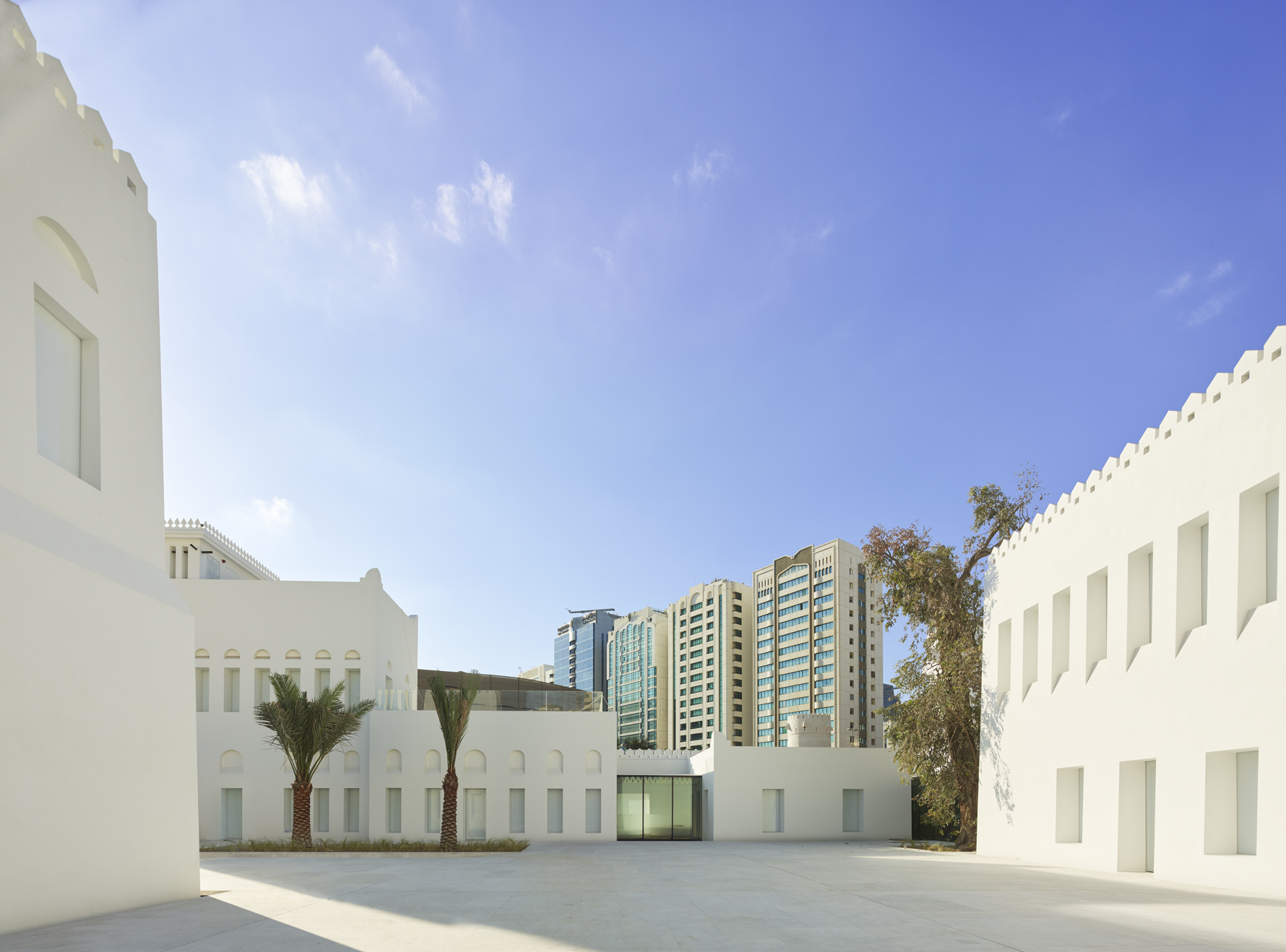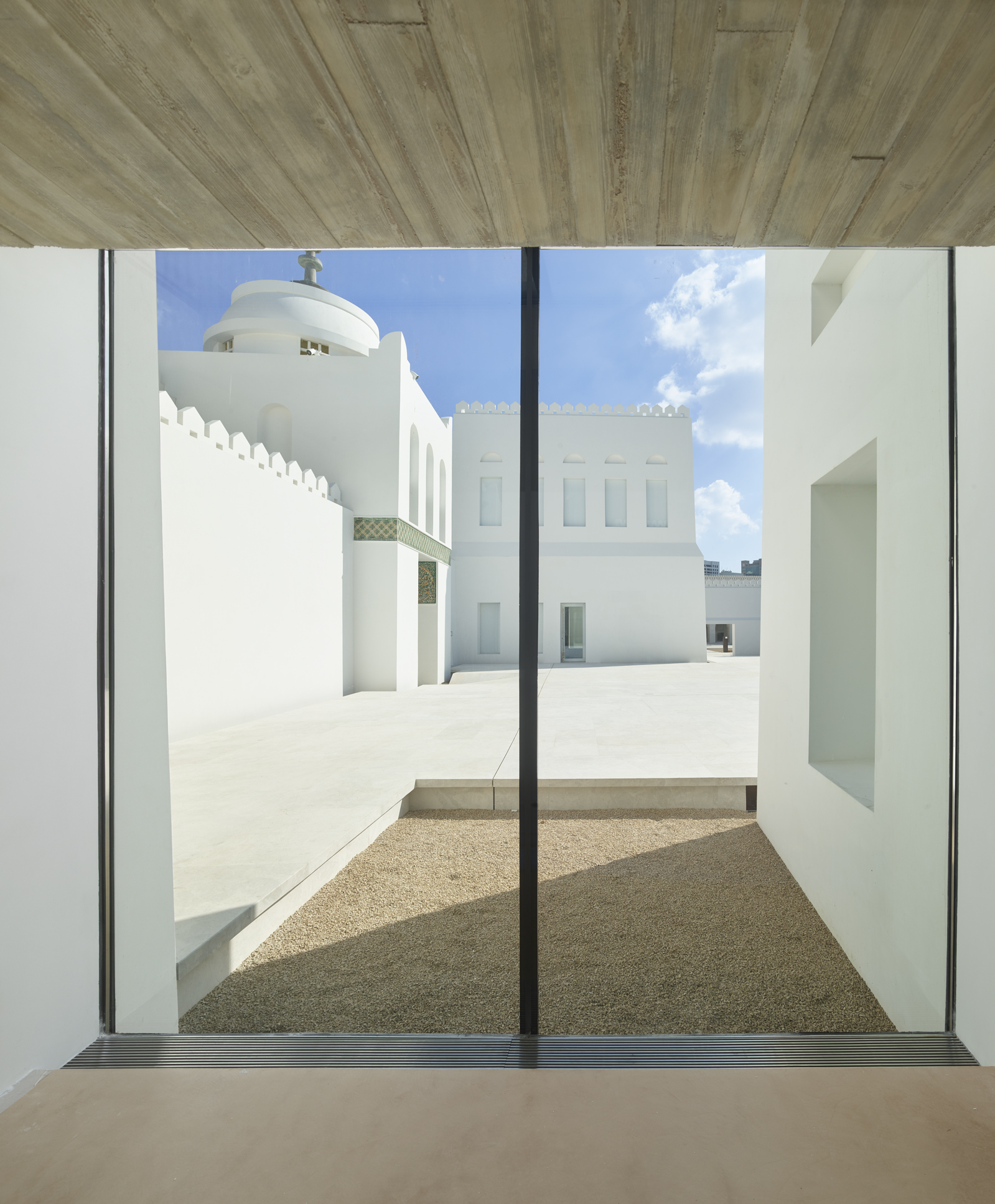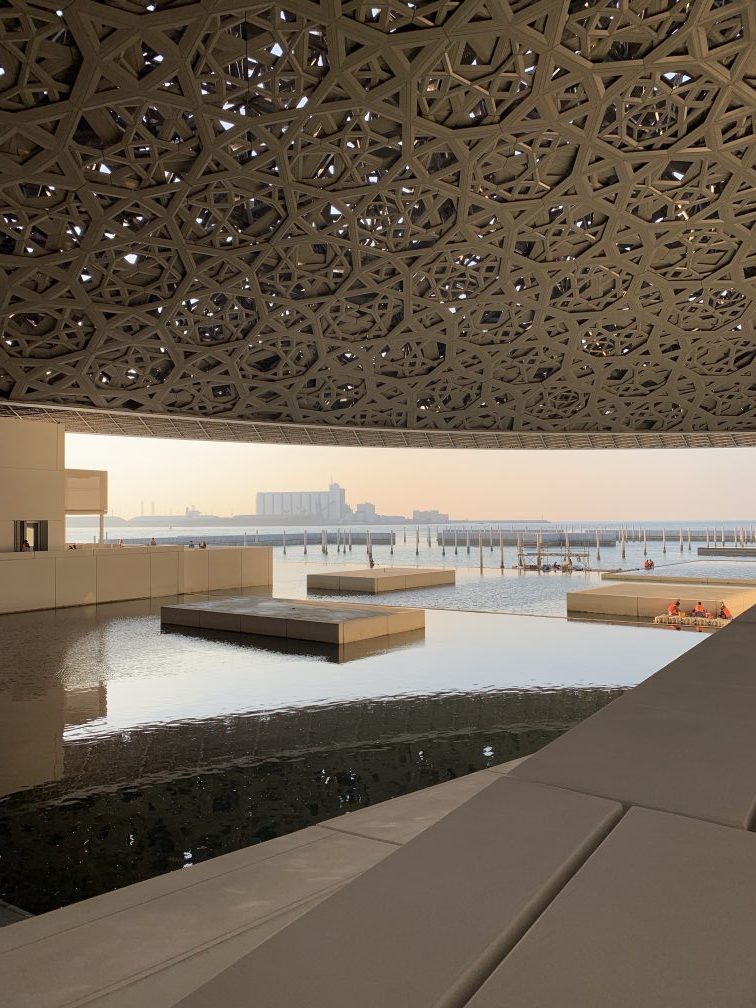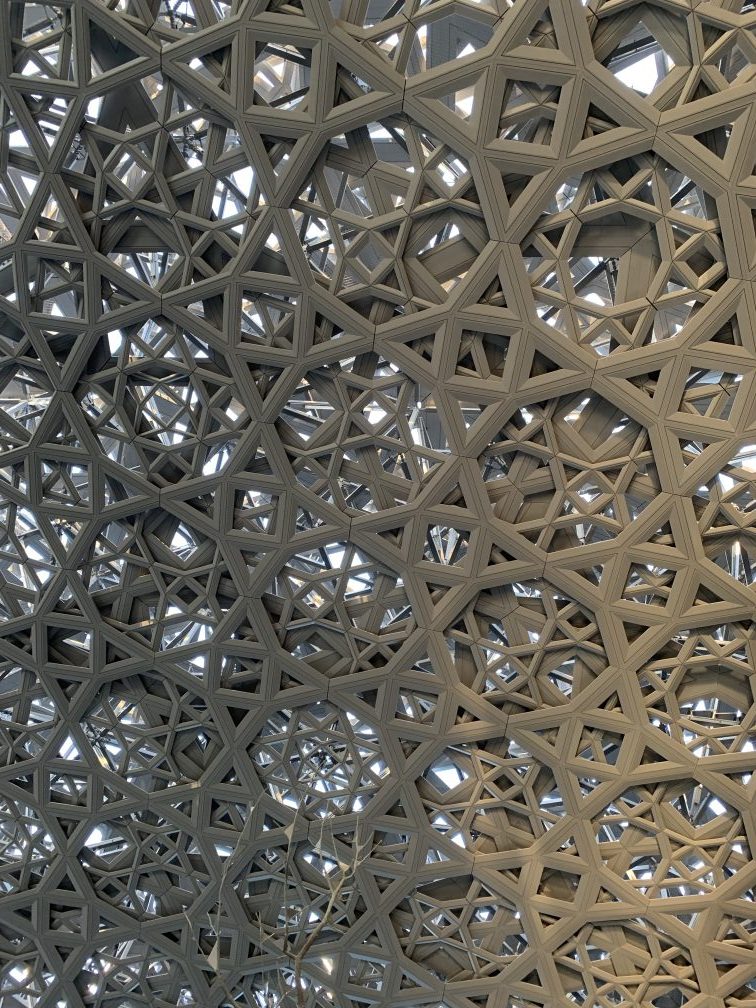Abu Dhabi: lots of desert and museums
A lot has happened in the Emirate of Abu Dhabi, which gained independence in 1971 under the rule of Sheikh Zayed bin Sultan Al Nahyan. Mineral resources have made Abu Dhabi rich and in recent decades have made the city grow extremely fast.
But unlike in Dubai, the government here focuses on promoting culture and art – and less on masses of tourists who want to experience a desert Disneyland with artificial hotel islands and indoor ski halls. 2018 the city celebrated the “Year of Zayed”, the year in which Sheikh Zayed, who was so important for the emirate, would have turned 100. It was he who laid the foundation for today’s infrastructure. His old fortress, the “Qasr Al Hosn”, was reopened in December 2018 after a long reconstruction with a new cultural campus.
Mohammad Khalifa al-Mubarak, Chairman of the Abu Dhabi Tourism and Culture Authority, talked about the project: “The cultural significance is of course very important. The cultural centre appeals to every Emirati who lives in the United Arab Emirates. It represents a central part of the cultural history of the Emirates. The stories of the country and its people are told here. The fact that there is such a historical place here in the middle of the city centre of Abu Dhabi is tremendous. And at the same time, as soon as you are inside the walls of the fortress, you realise that you are in a very relaxed environment. The place will give people a chance to relax here and imagine what Abu Dhabi looked like 100 or 200 years ago. “

Qasr Al Hosn. Fort: NE facade. © Roland Halbe

Qasr Al Hosn. Fort: coordior look out. © Roland Halbe
Mohammad Khalifa al-Mubarak is responsible for all of the emirate’s cultural institutions. As an important part of the government, his agency has set itself the goal of transforming Abu Dhabi into an internationally relevant cultural hotspot, while at the same time communicating the cultural heritage of the United Arab Emirates. The 18th century Qasr Al Hosn is a prime example of this. It is one of the oldest in the region and now has a permanent exhibition showing how people, and especially the royal family, have lived over the past 200 years.
The fort is now surrounded by a 140,000 square metre cultural area with a palm garden, amphitheatre, a workshop for traditional crafts and a cultural foundation. Maya Allison is Director of the NYU Abu Dhabi Art Gallery and curator for exhibitions at the reopened Cultural Foundation, which almost exclusively showcases artists from the Gulf region.
It is noticeable that the focus is less on the artworks and their significance than on the history of the artists, their origins and traditions. The cultural area is intended to bring the Emirati closer to their cultural history in an unobtrusive way.
The passion with which she is involved in this project at the Cultural Foundation stems from the fact that she wants to understand how all the artists became artists in the first place at a time when there was no infrastructure and support for them, says Allison, who came to Abu Dhabi from the USA. Some time ago, there were no art schools, no art galleries and no exhibition spaces in the Emirates. “Why would you become an artist? And yet it was as if these people had no choice but to become artists in this world without infrastructure.


“We have a relatively clear cultural strategy here." Mohammad Khalifa al-Mubarak
New contemporary art trends and modern galleries have been present in Dubai for many years. Since 2007, there has also been an internationally successful art fair – the Art Dubai.
The Louvre has been on Saadiyat Island in eastern Abu Dhabi for two years, which has also been home to the Manarat Al Saadiyat, a museum for contemporary art, since 2009. The Guggenheim Abu Dhabi, for which there is already a collection of purchased works, is soon to open directly next to the two museums. But other museums are also being planned, says Mohammad Khalifa al-Mubarak, head of tourism.
“We have a relatively clear cultural strategy here. A few months ago, we announced that we will restore the ‘Al Ain National Museum’ in Dubai, the oldest museum in the United Arab Emirates, built in 1971. We hope to reopen the museum in December 2020. At the same time, we plan to open many archaeological and contemporary museums in the next five years.” 1

"We need food, we need a roof over our heads, we need infrastructure and then education." Maya Allison
What the emirate is planning for the next few years is by no means unrealistic. There is enough space here and financial resources to realise all kinds of projects. But where are all the visitors going to come from – whom the museums and facilities need? Maya Allison, who has lived and worked in Abu Dhabi for over ten years, is confident. After all, the country is still young.
“As far as I know, there was no road between Abu Dhabi and Dubai in 1970. There was only sand. And they then spent the first 20 years constructing roads and buildings. I think there is this old well-known hierarchy of needs: We need food, we need a roof over our heads, we need infrastructure and then education. And at last when we get to education, we see how the arts also bear fruit and develop. I don’t think this is directly about a particular interest, but rather about the fact that it is now finally possible to promote cultural tradition and contemporary art,” says Allison.
Whereas in China, for example, contemporary art has become increasingly present and popular in recent years due to growing wealth and has finally also been discovered as a consumer good 2 , in Abu Dhabi it seems that the impressive cultural centres, museums and new acquisitions in the millions serve solely the purpose of art education. Like the saying goes: We show you what we have and we show you who we are.